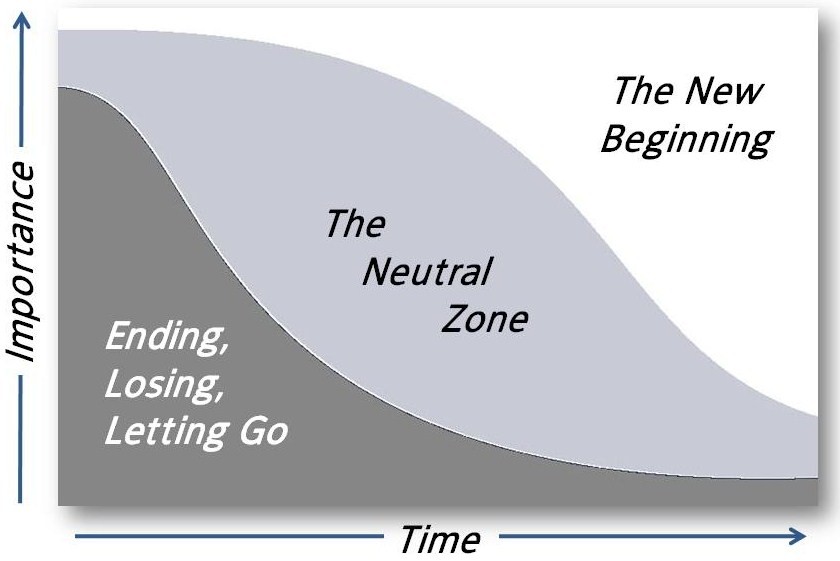(note: this is a “repost” of an item I wrote for the RCblog a couple of years back. We’ve changed the blog around, and this was deleted. I did discover that I needed it again, so I repost. The male pronouns are because I work with men primarily. jb)
Simply defined, a transition is the process of moving from one form of “normal” to the next. After the September 11th terrorist attacks, columnist Leonard Pitts, Jr. wrote that “normal” is not a fixed place on the map…but rather a point that is situational. In any transition, there is uncertainty and a certain degree of discomfort until you find your new “normal”.
The late Dr. Max Raines, a professor of higher education administration at Michigan State University, described a transition with the analogy of being on a trapeze. In order to get from one trapeze to the other, you have to let go and “float” for a little while. There is something to be said about a “leap of faith”…it can be scary, even if you have a high assurance that you’ll reach the other trapeze, and even if you know you have a net below you.
In truth, a transition is process, not an action. It’s not like taking off your socks, but more like changing them. Think about that process for a little bit: First you take off your old socks, then for a little while your feet are sockless, and then you put on the new socks.

Author and organizational consultant William Bridges developed a model that explains the process of transition. This three stage model focuses on the adjustment that people make when they are going through a transition. Bridges states that “transition starts with an ending and ends with a beginning.
The first stage is the ending or letting go. Your son is headed off to college, but before he can do that, he has to “end” his time of being a high school student, living at home, etc. He has to let go of his old identity before he can fully embrace his new one as a college student. It is normal – and expected – that he will feel lost, or sad, and might not be able to put it in words…after all, this is supposed to be a “happy” time, right? In most cases it is, but he’s also leaving behind a lot of the things he’s made part of his identity. It’s important that you help him understand these losses and find some way to treat them respectfully.
The second stage is the neutral zone. This is that “hanging in the air” period in the trapeze example. You’re still feeling somewhat connected to the “old” normal, but you’re also starting to connect to the “new” normal. It is a gray area, because your identity is in flux. Your son may feel discouraged, homesick, or sad…not all the time, but it might come out during a conversation. The best thing you can do is encourage and support him…care packages help too!
The final stage is the new beginning. This is the “new” normal. Your son will embrace his new identity as a Richmond student, and he will talk with you about the things he’s doing with a level of excitement that will confirm that he has made the transition. It won’t happen all at once, and it may take some time, but he will get there.
Of course, it’s also important to remember that you are going through a transition as well…keep this model in mind as you search for your new “normal”.
